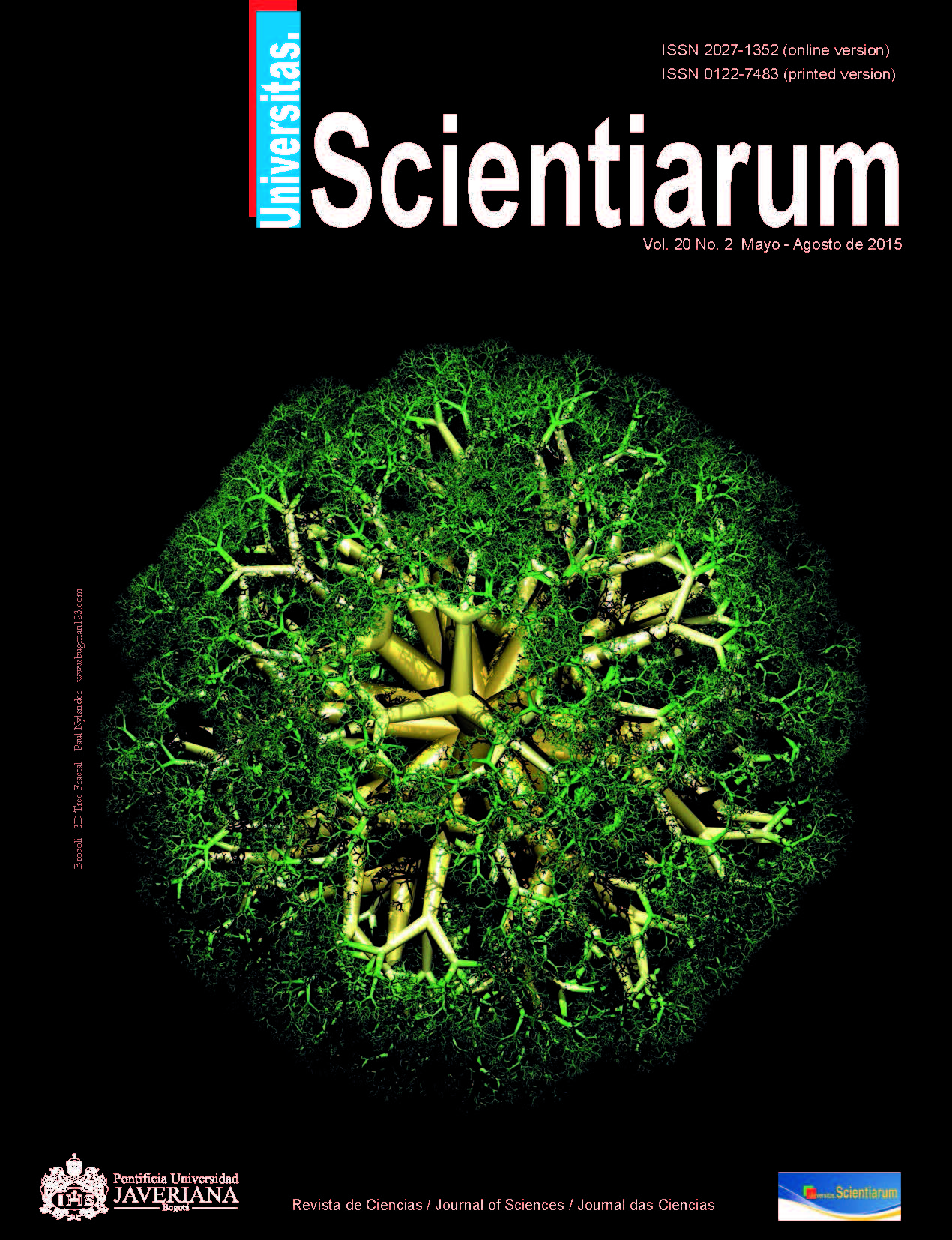Abstract
The lulo La Selva P32 is a cross over different kinds of lulo. Though its sensory characteristics improvement, its life span is very short. Due to it is a new kind of lulo, there are not so many studies over the ripening process. In order to understand some softening processes, in this work it is evaluated the xylanase kinetics at the lulo peel during ripening, and the results are correlated with the MRI (Magnetic Resonance Imaging) relaxation time T2. During ripening time, it is observed that the xylanase is one of the enzymes involved in the hydrolysis of the cell wall polymers. In addition, two T2 values regimes were distinguished by the xylanase kinetics. Although the correlation coefficient of 0.82 and p = 0.024 values, the results suggest that T2 weighted MRI can be useful as a non-invasive tool for ripening process monitoring.
Univ. Sci. is registered under a Creative Commons Attribution 4.0 International Public License. Thus, this work may be reproduced, distributed, and publicly shared in digital format, as long as the names of the authors and Pontificia Universidad Javeriana are acknowledged. Others are allowed to quote, adapt, transform, auto-archive, republish, and create based on this material, for any purpose (even commercial ones), provided the authorship is duly acknowledged, a link to the original work is provided, and it is specified if changes have been made. Pontificia Universidad Javeriana does not hold the rights of published works and the authors are solely responsible for the contents of their works; they keep the moral, intellectual, privacy, and publicity rights. Approving the intervention of the work (review, copy-editing, translation, layout) and the following outreach, are granted through an use license and not through an assignment of rights. This means the journal and Pontificia Universidad Javeriana cannot be held responsible for any ethical malpractice by the authors. As a consequence of the protection granted by the use license, the journal is not required to publish recantations or modify information already published, unless the errata stems from the editorial management process. Publishing contents in this journal does not generate royalties for contributors.



